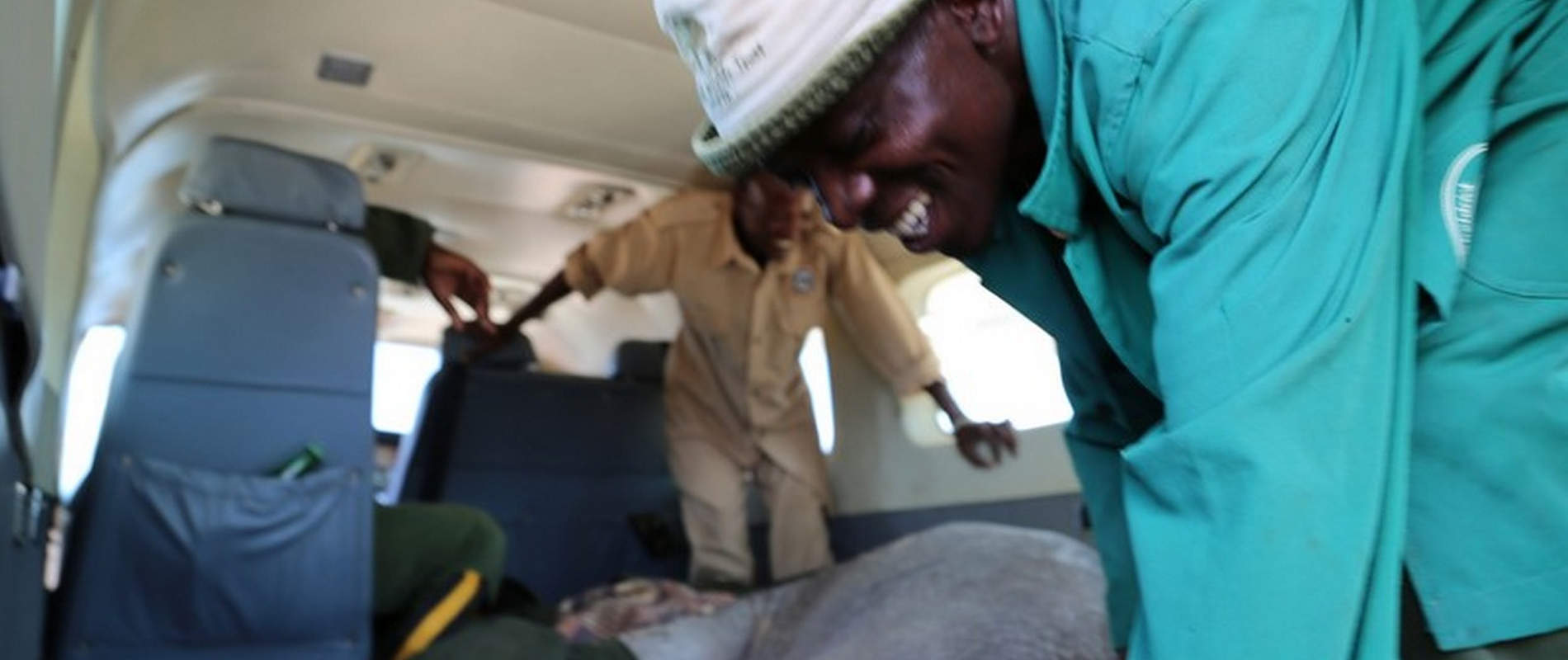The Kenya Wildlife Service reported to us that a young elephant calf was in need of rescue having been orphaned on the 2nd of November
The Kenya Wildlife Service reported to us that a young elephant calf was in need of rescue having been orphaned on the 2nd of November. The Namunyak Conservancy Community Scouts in Northern Kenya had retrieved her from a well and she was now safely in their care, waiting for help to arrive. Having had experience in rescuing a number of elephants over the years from the Namunyak wells the scouts were aware of the best practice in situations like this; they ensured she had water and shade and avoided feeding her any milk until our team arrived with the correct formula. The wrong milk is very detrimental to baby elephants who cannot tolerate the fat in cow’s milk. Around the same time we were also called by the Lewa Conservancy radio operator who had received a similar report. It was confirmed that the calf had fallen down a manmade well and very tragically her elephant family had been forced to abandon her fearful of the presence of the Samburu herdsman who also share the same watering points in the very dry seasons.
Her age was estimated to be approximately 15 months old, which for a well victim is surprisingly big. In the past we have found it to be the tiny elephant babies that are vulnerable to Samburu or Masai Wells, with the older elephants very aware of the dangers and better able to avoid them. Sadly this was not the case for this young female, and she appeared to have struggled for a long time given the condition of her back, which was rubbed raw by the time she was finally extracted. How long she had been trapped before being discovered remains unclear, but it was suggested to be over 12 to 14 hours. The DSWT team of elephant keepers was mobilised to fly into Namunyak Conservancy north of Samburu National Reserve from our Nairobi nursery. The Namunyak bush strip is short and challenging at the best of times, but with the age of the calf considered we ensured just a skeleton crew was sent on the plane to save on weight. When they landed they found her waiting patiently, standing in the back of the landrover pickup, and appearing relatively calm.


No time was wasted and she was hastily prepared for the return flight to Nairobi, strapped and placed on a stretcher to be loaded into the back of the Cessna Caravan. The hour was late and as it was the rescue team was going to land in Nairobi after dark. By the time the plane landed and due to the Nairobi traffic she didn’t arrive at the Nursery until around 8.00pm.






Carried to the stockade she was unstrapped and she rose to her feet surveying her new surroundings. She was placed next to Roi and Tusuja who were now sharing the next door stockade. Their presence helped calm her down, and she took water from a bucket and fed on the freshly cut greens almost immediately. The milk was however an altogether more complicated process, as she was not happy to have a Keeper in the stockade with her and a few days past before they could actually comfortably remain in her boma without her becoming extremely agitated. She began by taking her milk from a bucket but once she got an irresistible taste for it she capitulated to suckling from the bottle held by a Keeper. We named her Naseku, and in no time she had tamed down beautifully and it was decided after just a few days that she should join the Nursery group out in the forest.





Her integration was one of the smoothest we have ever witnessed, she left the confines of her stockade to be immersed in the orphan herd and from that moment on she never looked back. Her presence was embraced, and that same day she was present at our open public hour together with her Nursery friends, who had obviously conveyed the routine to her because she remained completely unperturbed by events and was comfortable throughout. Naseku has embraced her new home, her new found friends, and has grown in strength and condition over the short time she has been in our care.



























